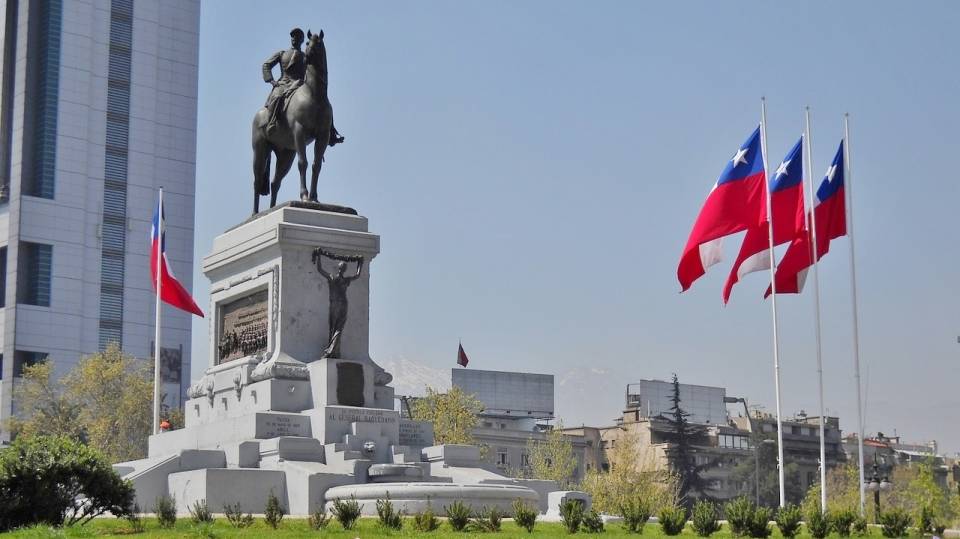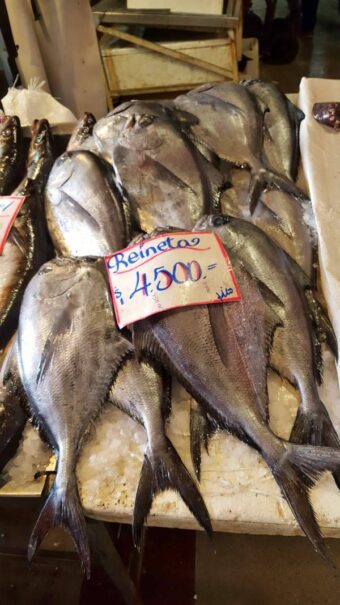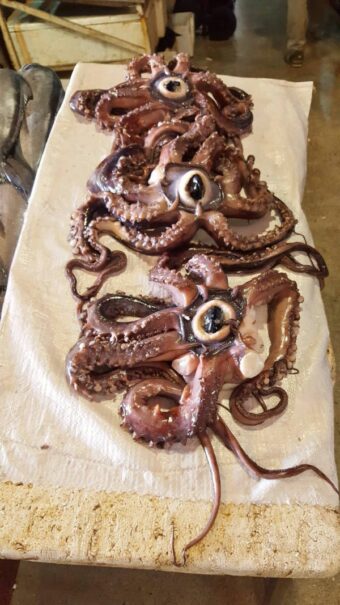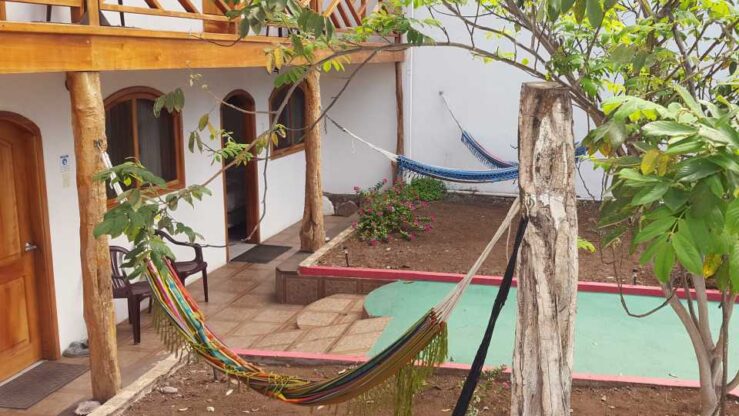Santiago de Chile City Guide – 10 Top Sights & Itinerary
1. Palacio de la Moneda
2. Plaza de Armas
3. Santiago Metropolitan Cathedral
4. Museo Chileno de Arte Precolombino
5. Mercado Central
6. Parque Forestal
7. Museo Nacional de Bellas Artes
8. Cerro San Cristóbal
9. Sky Costanera
10. Museo de la Memoria y los Derechos Humanos
Once you have arrived in Santiago, you are ready to start sightseeing in the city with the stunningly panoramic views of the scenic snowcapped Andes Mountains of Chile.
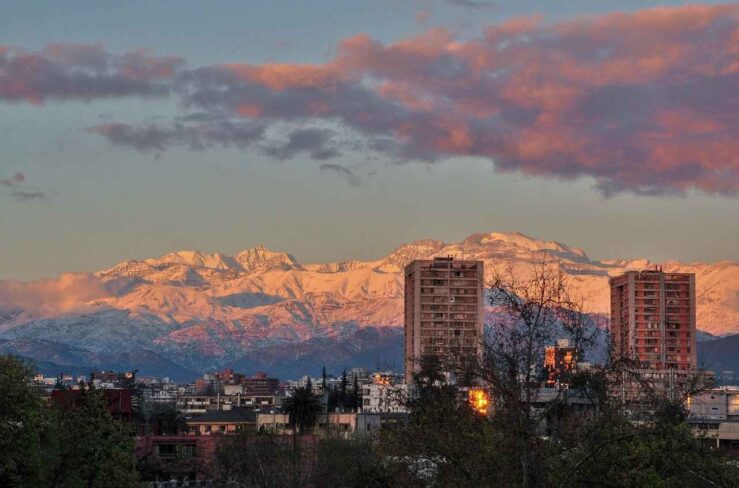
Photo: Sergom5 / Pixabay
So, what are the must-see places in the city you will want to include in your itinerary to make the most of your stay in Santiago de Chile?
We have chosen to stay in Barrio Yungay, a renovated neighbourhood with houses dating from the 19th century. It became a prominent and fashionable residential quarter for the Santiago upper class.
What makes Barrio Yungay stand out today are the tremendously well-preserved houses. It is a historic neighbourhood where the buildings, to a certain extent, have remained intact or undergone renovation. Due to these comprehensive renovations in recent years, it appears as an attractive and popular part of the city with citizens and tourists alike. It features both the Museum of Natural History, the Museum of Contemporary Art and the Museum of Memory and Human Rights. The first two museums are inside the vast Quinta Normal Park.
The historic heritage has become the perfect frame for cultural activities, theatres, and other initiatives. With its charming architecture and lush green parks, the neighbourhood really appeals to the citizens.
One of the must-sees in Santiago city is the Palacio de la Moneda, or Palace of the Mint, seat of the Chilean president. It includes the offices of three cabinet ministers and occupies several blocks in the Civic District.
Originally, the building was intended to house the National Mint, hence the name (mint/coin being ‘moneda’ in Spanish). The architect behind the Palace was the Italian architect Joaquín Toesca, and the building was erected between 1784 and 1805. Only in 1846 did it become the seat of government.
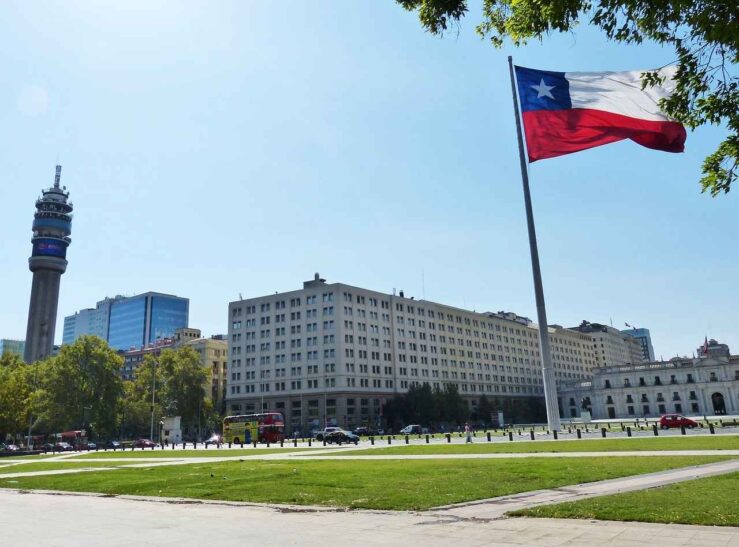
Palacio de la Moneda | Photo: Falco / Pixabay
In 1973, the Palace became the scene of a military coup when General Pinochet stormed the governmental building, an action costing the lives of a significant number of Chileans. During the coup, La Moneda was bombed as the president, Salvador Allende, refused to resign, a decision that cost him his life.
Not until 1981 was the building re-established as a palace in the original neoclassical style. La Moneda still serves as the seat of the president although he does not reside here any longer.
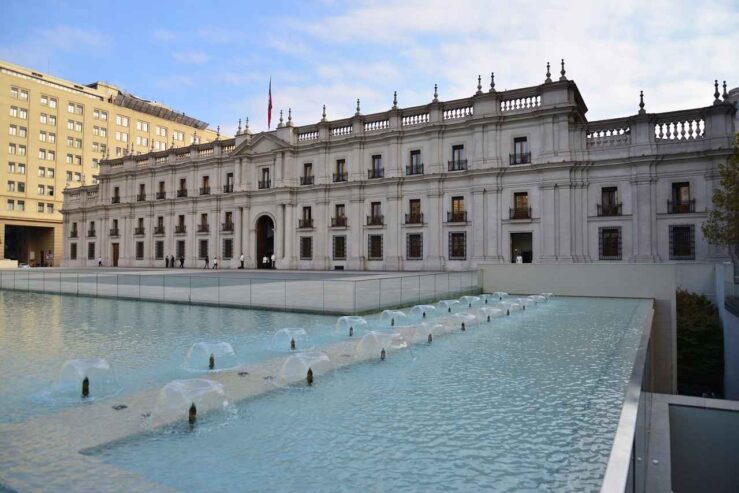
Palacio de la Moneda | Photo: Patricio Hurtado / Pixabay
Today, La Moneda is one of the most fascinating architectural buildings in Santiago, one of the most iconic landmarks in the city, which you can visit to gain insight into the culture and history of Chile. You may get the opportunity to see several patios here, among others, the Patio de los Naranjos (‘patio of orange trees’). La Moneda features a number of remarkable and magnificent rooms and halls. You can also attend the changing of the guard, which some days takes place here in the morning.
The Chilean government has also established a Cultural Centre with exhibitions by Chilean artists.
Easter Island itinerary 3 days
Road safety Chile/your country
McMeal price Chile/your country
Crime rate Chile/your country
The historic centre is in the quarter around Plaza de Armas, where you will find Santiago City Hall, the Metropolitan Cathedral, the Central Post Office, the Court Houses as well as the Museo Histórico Nacional and the Museo de Arte Sagrado.
Like many other colonial cities in South America, the colonial Plaza de Armas still exists! That was the ‘armed’ square, surrounded by governmental buildings, cathedrals and other significant structures, where the population could gather and be protected.
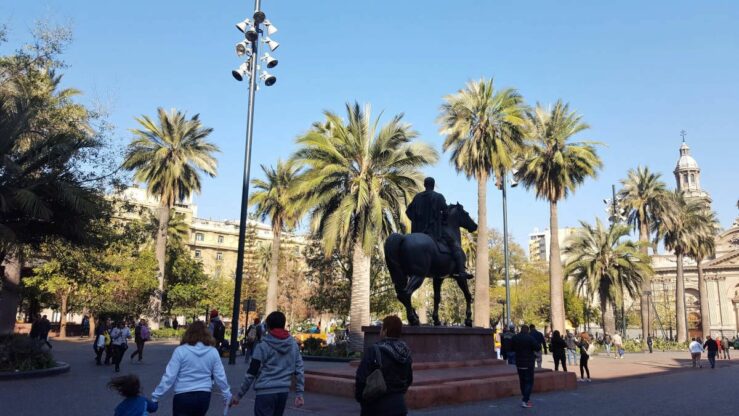
Plaza de Armas with the monument of Pedro de Valdivia, Santiago’s founder | Photo: Travel In Culture
Excavations under the city have shown that there used to be an Inca village located here. Plaza de Armas was in the 1500s the site of a garrison town with a market square and several administrative buildings. An equestrian monument of Santiago’s founder, the conquistador Pedro de Valdivia, has been raised in the plaza in commemoration of him.
Since the 1860s, Plaza de Armas has developed into a city garden and lush main square with trees and flowers. Recently, a stretch of esplanade has been added to the square for cultural activities, and today, it is a welcome spot and an attractive centrepiece in the bustling city of Santiago de Chile. Beautiful palm trees and green beds dot the square to make it park-like. People come here to play chess or view the local Chilean Cueca dance.
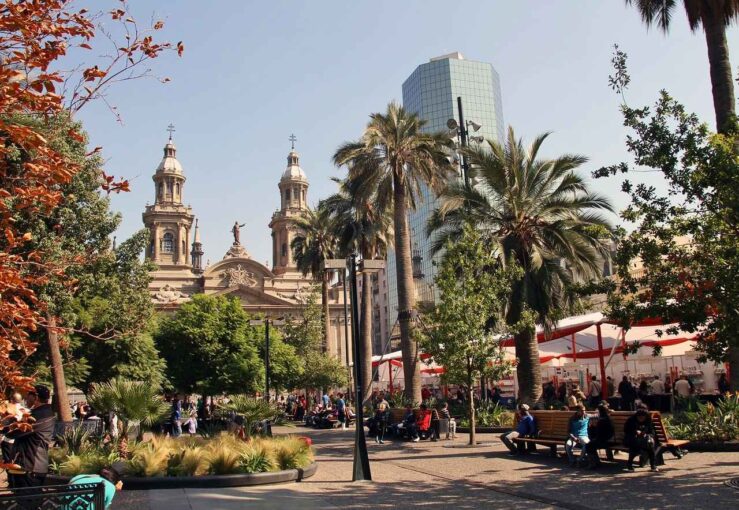
Plaza de Armas, Santiago Metropolitan Cathedral | Photo: Monica Volpini / Pixabay
On a sunny day, there is no need for jackets or other warm clothing here, not even during the coldest winter month!
It is really all kinds of people who pass through the beautiful plaza. Elegantly dressed business people on their way to work and elderly people coming to socialise mixed with the occasional tourists intrigued to experience the heart of the metropolis. A perfect spot to soak up the atmosphere!
The square is neat, clean and orderly. Homeless people may occupy a couple of benches while having a friendly chat with patrolling police officers – and harmonically integrating with other people in the square. It is really the plaza for everyone in the city.
While at Plaza de Armas, don’t miss out on the beautiful Santiago Metropolitan Cathedral flanking the square. The neoclassical cathedral with free entry is the seat of the Archbishop of Santiago de Chile and was designed by the Italian architect Gioacchino Toesca.
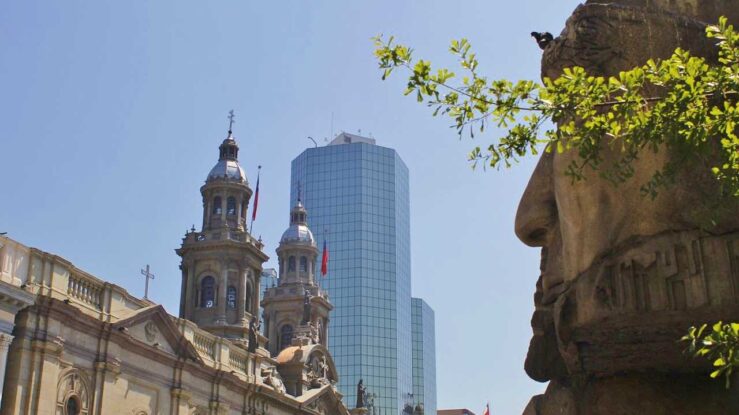
Santiago Metropolitan Cathedral | Photo: Jean Vanes Dorval / Pixabay
Allow yourself some minutes of tranquillity from Santiago’s hustle and bustle, and enter the small cathedral to enjoy the splendour and the eye-catching and sumptuous baroque details. The construction dates back to around 1600 and was planned by Santiago’s founder, Pedro de Valdivia, who established a stunning place of worship in colonial times.
Santiago Metropolitan Cathedral has been influenced by many architectural styles. Due to its location above the Atacama Fault System, Santiago frequently experiences earthquakes. During the last centuries, the cathedral has been devastated by earthquakes multiple times. Over the years, this has led to a number of restorations and rebuilding in the styles that were popular at different times. Also, the two cathedral towers were added long after the initial construction.
The Chilean Museum of Pre-Columbian Art, the Museo Chileno de Arte Precolombino, is a fine museum just round the corner from Plaza de Armas. It showcases around 3,000 pre-Columbian artworks and other artefacts from Latin America.
The museum was founded by the Chilean architect Sergio Larraín García-Moreno and first opened in central Santiago in 1981 in the impressive Palacio de la Real Aduana, dating from the beginning of the 1800s. The exhibitions feature pre-Columbian cultures from Mesoamerica, Intermediate / Isthmo-Colombian, Amazonia, Pan-Caribbean, and ancient Andean culture. Come here to discover authentic pre-Columbian artworks!
Continuing in a northerly direction of Santiago city, you will arrive at the Mercado Central – a huge indoor market, primarily a fish market. The existence of this massive indoor market right in the city centre of Santiago may really come as a surprise if you don’t expect it.
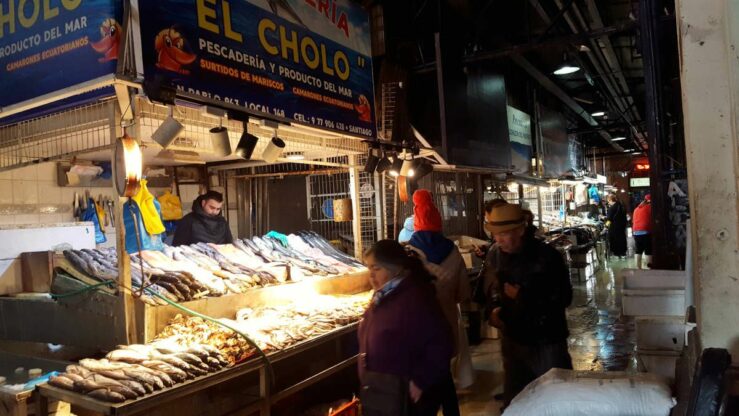
The Mercado Central in Santiago city | Photo: Travel In Culture
The historic Mercado Central opened in 1872 in Santiago de Chile and had, as an iconic feature, a characteristic cast-iron roof consisting of a central pyramidal roof and a domed tower. This spectacular structure replaced the former Plaza del Abasto, which disappeared in a devastating fire in 1864.
Your attention will be caught by an abundance of beautiful fish wherever you turn in the cold market hall – and you will sense their delicate, subtle, fresh seaside smell. If you like fish (and have a kitchen in Santiago de Chile), you will definitely want to buy and prepare some of the absolutely delicious-looking fresh fish for dinner!
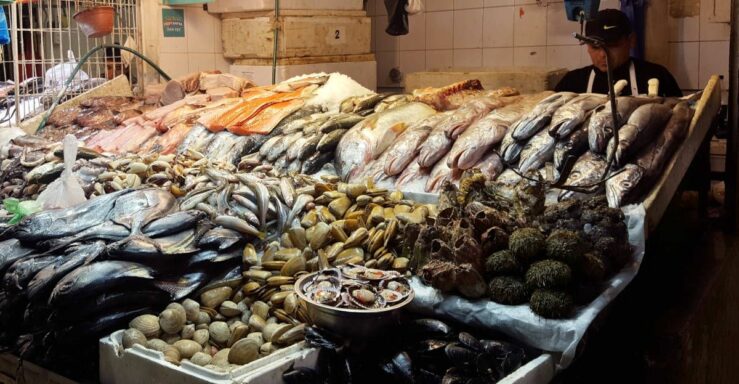
All kinds of Chilean fish and shellfish are available at the market | Photo: Travel In Culture
There is a good mixture of the most spectacular species of freshly caught fish and shellfish. Reineta or queenfish, which is endemic to Chile, or the outlandish piure, a marine animal with deep-red flesh. Perhaps surprisingly, the creature looks like a rock at the sea bottom, but it reveals a colourful inside when opened.
You will also find tollo, a species of velvet catfish, which is also endemic to Chile together with the Falkland mullet, robalo. These exotic species can be found among swordfish, hake and salmon – which are far more common in other parts of the world. Also, octopus, clams and sea urchins are readily available at the Mercado Central.
- The endemic reineta can be seen everywhere at the Mercado Central.
- We are extremely fascinated by the octopuses or ‘pulpos’!
To complement the sale of fish and shellfish, many restaurants inside the market hall offer a wide selection of… precisely fish and shellfish! A few suppliers of Andean knitwear and woven tissues have found their way to the building, too!
A stroll in the nearby Parque Forestal is spring-like even in winter. It is an urban park in the historic part of Santiago along the Mapocho River. The park structure is perfect for a longer walk since it is extended by a long, narrow stretch of greenery, the Parque Balmaceda, at its eastern end. You may continue several kilometres in green surroundings all along the river! It is an interesting and enjoyable garden in Santiago city to chill for an hour or two!
In some respects, Santiago city is similar to other big cities in the world, and in other respects, it is absolutely in a class of its own. The Andean metropolis is beautiful with the snowcapped high Andes Mountains in the background, visible even from central Santiago.
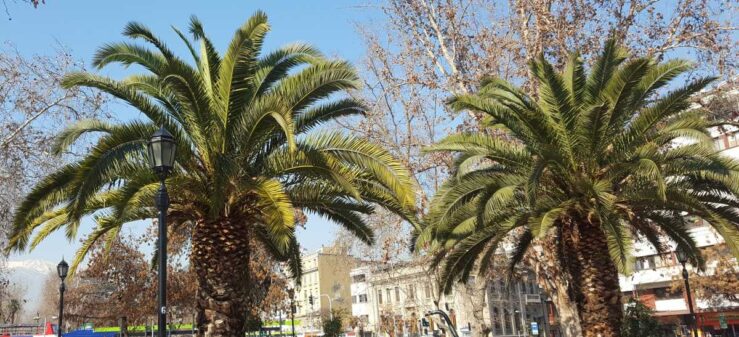
Photo: Travel In Culture
The National Museum of Fine Arts, the Museo Nacional de Bellas Artes, has an excellent central location inside the Parque Forestal.
This museum, now with free entry, is also known as the Museum of Contemporary Art and features Chilean and South American art from the 19th century until today. It was established in 1880 but had only a few items during the first years. It was not until 1990 that the current national museum was established as a unified art collection of all the various collections previously existing in several separate galleries in Santiago.
Among the great painters, you will find the Peruvian painter José Gil de Castro, who later became a Chilean citizen, and the distinguished Chilean expressionist painter Israel Roa.
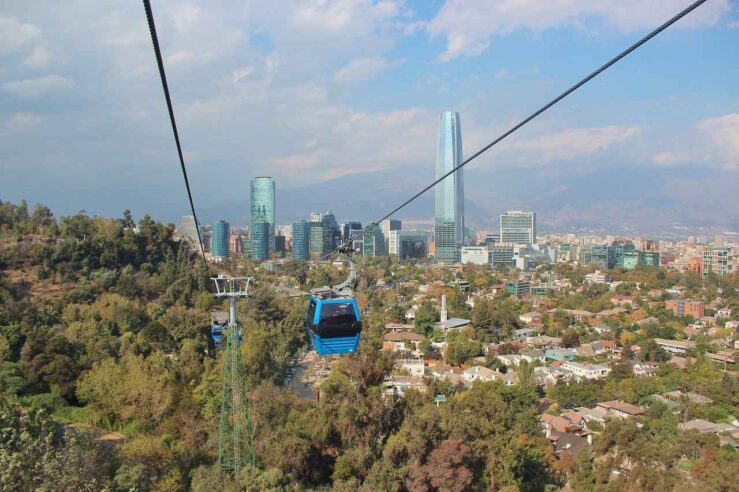
Photo: SandraPV-hh / Pixabay
Cerro San Cristóbal is a hill covering quite a vast area in northern Santiago. Reaching 300 metres above the city, it is the second highest point in Santiago de Chile, after Cerro Renca. Its indigenous name was Tupahue, but the hill was renamed by the Spanish conquistadors. Cerro San Cristóbal is also the location of Santiago’s largest park, the Metropolitan Park.
An option is also to hike to the sanctuary with the 22-metre statue of the Virgin Mary atop the hill.
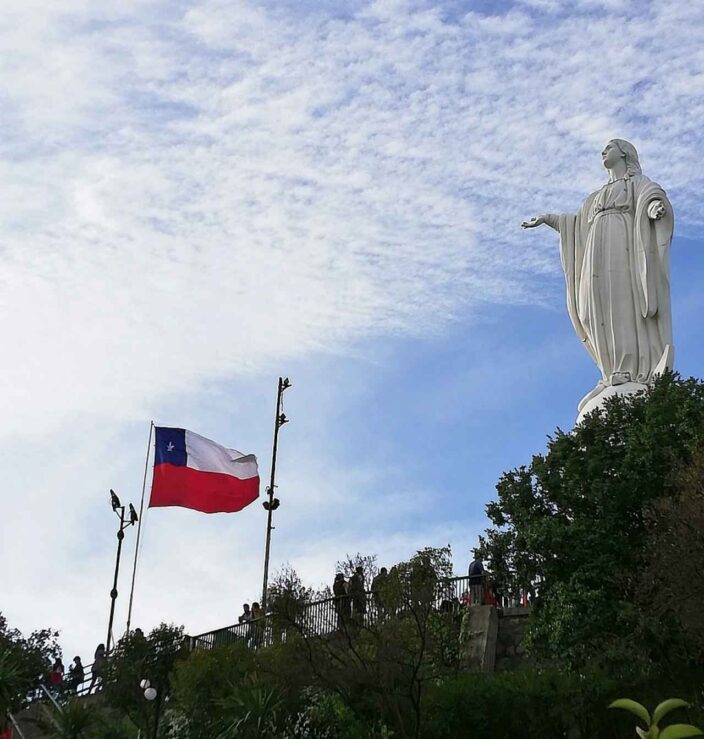
Cerro San Cristóbal | Photo: Renato Pino / Pixabay
For outstanding panoramic views of Santiago, visit the Sky Costanera, which will provide an exceptional 360-degree experience of the city and the surrounding Andes Mountain range. The skyscraper, also known as Gran Torre Santiago, stands as a giant rocket waiting to be launched in the mountainous Chilean landscape.
Designed by the Argentine architect César Pelli in collaboration with the Chilean architects Alemparte Barreda & Asociados and the Canadian company Watt International, the impressive structure has in a short time become one of the top sights in Santiago de Chile.
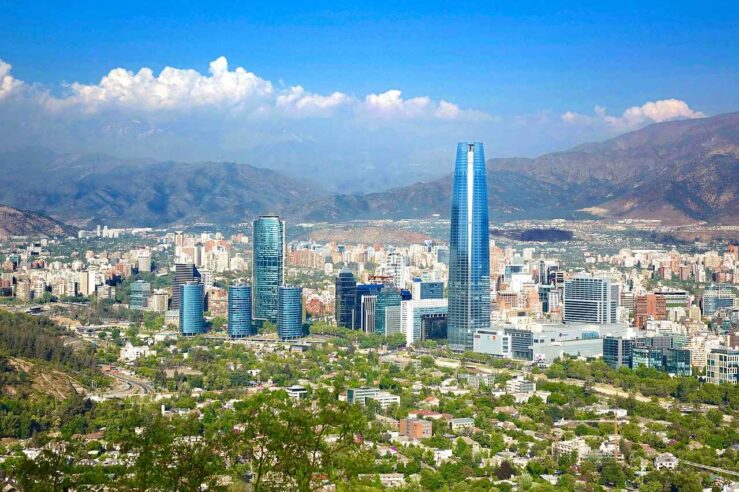
Sky Costanera | Photo: Horst Engelmann / Pixabay
Although initiated in 2006 and projected to be accomplished in 2010, the construction was not entirely completed until 2013 – after being a bit delayed due to the international financial crisis in 2008-2009. The observation deck Sky Costanera was opened to the public in 2015.
The observatory is, with its height of 300 metres, officially the highest in South America! From the viewpoint on the 62nd floor, you can enjoy the scenic surroundings, Santiago’s cityscape and the picturesque sunset!
If you stay in Barrio Yungay, you are close to the Museum of Memory and Human Rights, the Museo de la Memoria y los Derechos Humanos, near the Quinta Normal Park. It opened in Santiago City in 2010 with the aim of drawing attention to human rights violations committed in Chile by the state under the dictatorship of General Pinochet between 1973 and 1990.
The museum was inaugurated on the occasion of the bicentenary of Chile’s independence and commemorates the victims of the violations, showing them and their families respect.
Read next: Do Bay Tour to See Blue-footed Birds and Giant Sea Turtles!
‘Santiago de Chile – Itinerary & City Guide’
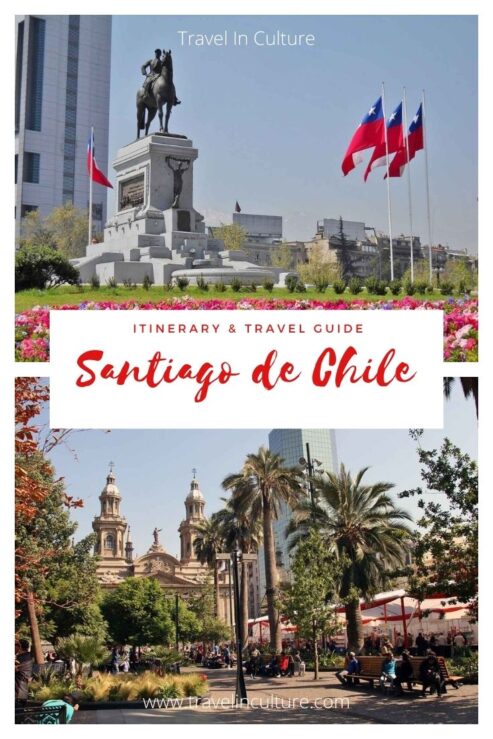
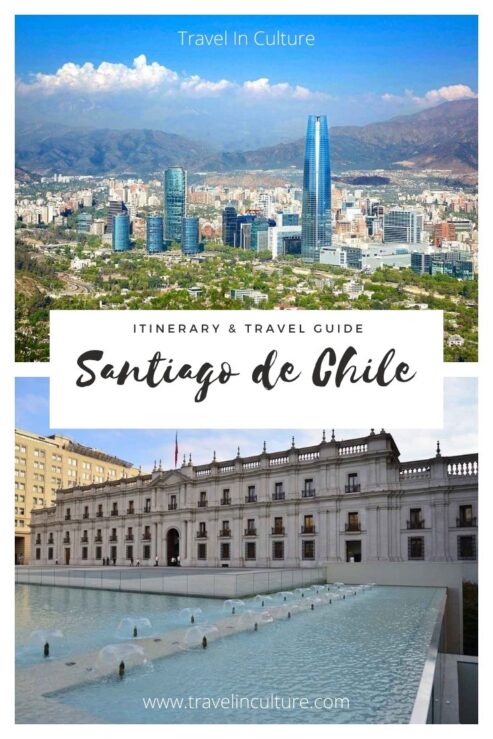
Featured image of
Top Sights Santiago de Chile, Itinerary & City Guide:
Desiñador Grafico / Pixabay
Santiago de Chile 10 Top Sights Itinerary & City Guide


